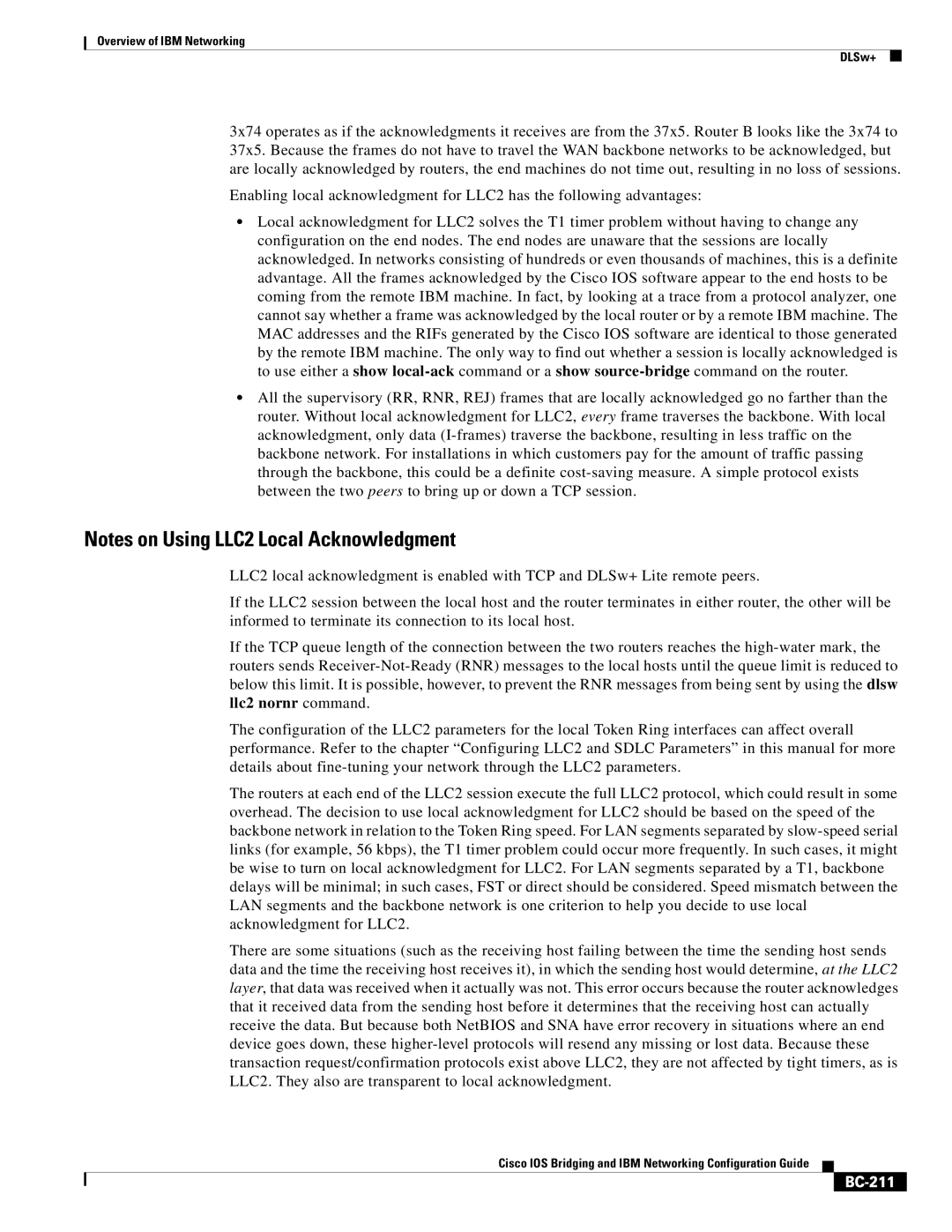
Overview of IBM Networking
DLSw+
3x74 operates as if the acknowledgments it receives are from the 37x5. Router B looks like the 3x74 to 37x5. Because the frames do not have to travel the WAN backbone networks to be acknowledged, but are locally acknowledged by routers, the end machines do not time out, resulting in no loss of sessions.
Enabling local acknowledgment for LLC2 has the following advantages:
•Local acknowledgment for LLC2 solves the T1 timer problem without having to change any configuration on the end nodes. The end nodes are unaware that the sessions are locally acknowledged. In networks consisting of hundreds or even thousands of machines, this is a definite advantage. All the frames acknowledged by the Cisco IOS software appear to the end hosts to be coming from the remote IBM machine. In fact, by looking at a trace from a protocol analyzer, one cannot say whether a frame was acknowledged by the local router or by a remote IBM machine. The MAC addresses and the RIFs generated by the Cisco IOS software are identical to those generated by the remote IBM machine. The only way to find out whether a session is locally acknowledged is to use either a show
•All the supervisory (RR, RNR, REJ) frames that are locally acknowledged go no farther than the router. Without local acknowledgment for LLC2, every frame traverses the backbone. With local acknowledgment, only data
Notes on Using LLC2 Local Acknowledgment
LLC2 local acknowledgment is enabled with TCP and DLSw+ Lite remote peers.
If the LLC2 session between the local host and the router terminates in either router, the other will be informed to terminate its connection to its local host.
If the TCP queue length of the connection between the two routers reaches the
The configuration of the LLC2 parameters for the local Token Ring interfaces can affect overall performance. Refer to the chapter “Configuring LLC2 and SDLC Parameters” in this manual for more details about
The routers at each end of the LLC2 session execute the full LLC2 protocol, which could result in some overhead. The decision to use local acknowledgment for LLC2 should be based on the speed of the backbone network in relation to the Token Ring speed. For LAN segments separated by
There are some situations (such as the receiving host failing between the time the sending host sends data and the time the receiving host receives it), in which the sending host would determine, at the LLC2 layer, that data was received when it actually was not. This error occurs because the router acknowledges that it received data from the sending host before it determines that the receiving host can actually receive the data. But because both NetBIOS and SNA have error recovery in situations where an end device goes down, these
Cisco IOS Bridging and IBM Networking Configuration Guide
